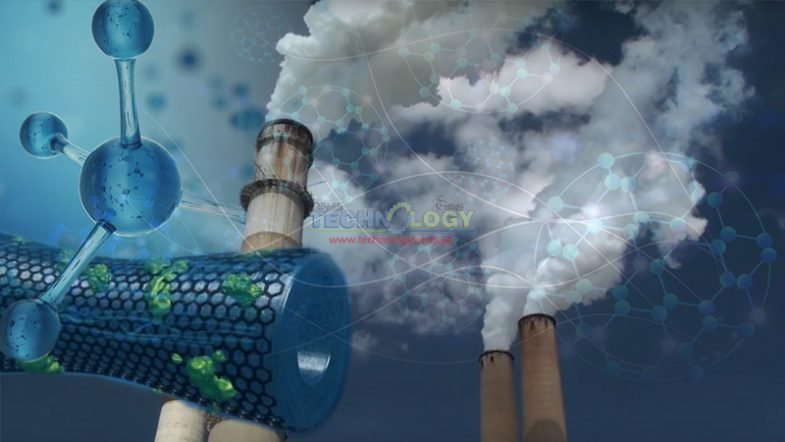Environmental pollution is increasing rapidly due to unlimited disturbance of human beings for the existence of natural environment. Human activities such as industrialization, uncontrolled transportation, deforestation and urbanization are affecting natural world and environment in worst manner. Remediation of environmental pollutants through nanotechnology is receiving a considerable growing awareness.

Major environmental pollutants caused by these activities are sulfur oxides (SOx), nitrogen oxides (NOx), carbon oxides (COx), hydrocarbons (HCs), particulate matter (PM), harmful radiations, organic pollutants (VOCs), heavy metals (lead, arsenic, chromium, cadmium, mercury) and noise pollution. These pollutants can cause some serious threat to environment and life of plants, animals and humans, by producing acid rain. Some natural phenomenon such as volcanic eruption also has sulfur containing pollutants.
Various factors like unlimited usage of pesticides, herbicides, fertilizers, sewage-sludge and oil spills can cause water pollution. All these environmental pollutants (air, water and soil) are found as mixture and are very hard to remediate. Now it is becoming very essential to monitor, remediate and treat these environmental pollutants for the survival of mankind and other kinds of life on Earth. For this purpose many latest technologies are developing and are being in use by researchers.
Today there are numerous remedial options for the treatment of environmental pollutants such as remediation standards method, site assessment method, mapping remediation, remedial technologies (thermal desorption, excavation, surfactant enhanced aquifer remediation, pump and treat, solidification and stabilization, in-situ oxidation, soil vapor extraction, bioremediation, collapsing air micro bubbles), transport and emergency safety assessment, emission standards, environmental protection agencies (EPAs) and environmental impact assessment method (EIA).
A new environmental remedial technology known as “Nanotechnology” is now taking place of all previous technologies because it can totally degrade most of the pollutants (organic) and can be produced from low cost raw material. Nanotechnology is now being in use in different fields of life such as food, bio-medical and agriculture sector for the purpose of pollutant remediation. Nanoparticles can be found naturally, but for their better efficiency and usage scientists are producing them artificially, called engineered nanoparticles. According to estimations, there are more than 800 kinds of engineered nanoparticles now available commercially.
Nanoparticles have distinctive property of having surface area less than or equal to 100 nm. Due to nano-size surface area nanoparticles can move with the aqueous phase environmental components and can reach to the targeted contaminant zone, there they can be attached to contaminants and then start reacting with contaminant.
Some types of nanoparticles with their remedial properties are: iron based nanoparticles for remediation of heavy metals, organic or inorganic pollutants present in soil, ground water and waste water, bimetallic nanoparticles have catalytic activities and can reduce phyto-toxicity caused by heavy metals, Nanoscale zero-valent iron particles can remove organic contaminants, dendrimers removes heavy metals and have wide applications in biomedical field i.e. anti-viral drugs, tissue repair and chemotherapeutic process, calcium peroxide nanoparticles removes biological contaminants and micelles removes poly aromatic hydrocarbons.
Titanium dioxide nanoparticles are also very useful for environmental remediation in term of total degradation of organic pollutants from waste water and heavy metals from soil. Silver nanoparticles are diversely used in the fields of cosmetics as antimicrobial agent and also in household products and water filters. Zinc oxide nanoparticles in suitable amounts, size and structure can be used as catalyst, photo-catalyst, electrical and optoelectronic processes.
Remediation of environmental pollutants through nanotechnology is receiving a considerable growing awareness. Distinctive abilities of these particles like wider surface area, more reactivity and emergent properties at nano-scale are gaining more interest of researcher to use them as remediation of contaminants present in environment. But there are also some challenges associated with the usage of nanoparticles, as most of them have ability to form aggregates and can make clusters.
Media on which nanoparticles are used can limit their activity and efficiency according to their chemical and physical characteristics. Keeping in mind all characteristics of nanoparticles, it is crucial to make nanoparticles which must be environmental friendly. Processes of their synthesis should also not destructive or waste generating.
Moreover products developed by nanotechnology must be directly or indirectly beneficial for human and environment and should also enhance sustainability of natural world. Nano-products should also produce along with proper awareness for the persons using them. Like other remedial techniques there must be environmental impact assessment of nano-products. By keeping in mind all these facts use of nanotechnology can revolutionaries the world of mankind.
Muhammad Zia-ur-Rehman, Haseeba Maryam, Hinnan Khalid and Muhammad Zeeshan